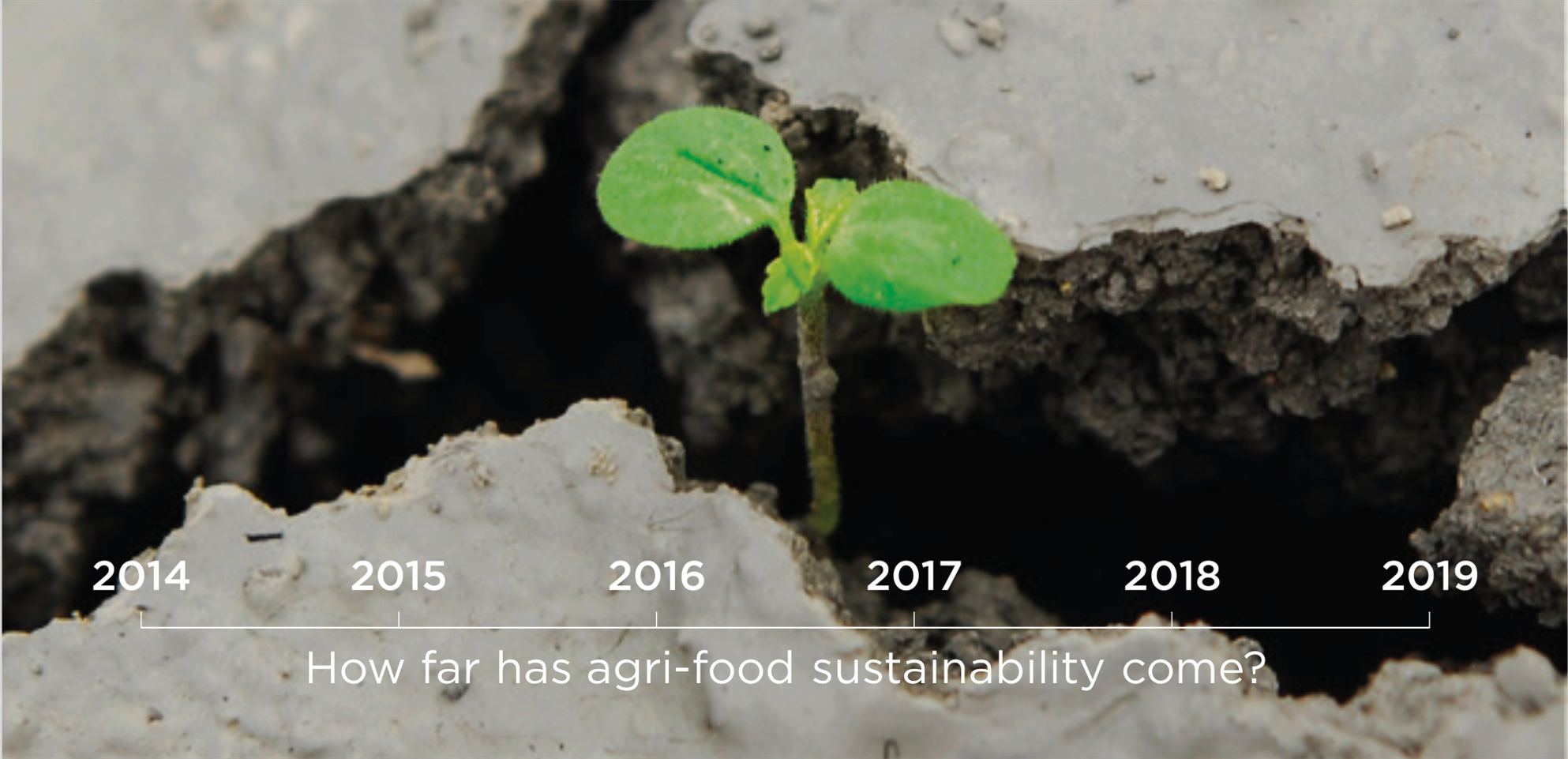
We wondered: “Has anything changed in the 5 years since we launched our landmark “The COSA Measuring Sustainability Report”? That report, launched with the UN at its Geneva headquarters, was the first to use comparable metrics to evaluate the actual outcomes and even impacts of diverse sustainability initiatives operating in Latin America, Africa and Asia. It revealed some interesting trends as well as the distinct differences and commonalities that were emerging among various approaches including certifications.
The original report surprised many in 2014 with its hard data and frank insights, the result of partnered research with leading institutions ranging from IFPRI and ICRAF (World Agroforestry Center) to the University of California and the University of Ghana. The tens of thousands of field surveys tested many theories about sustainability practices and the report took a hard-nosed look at correlations and causality focusing on the actual results of various types of interventions. Using statistically-sound data and comparable (transparent) indicators enabled policymakers and companies alike to start learning systematically about what works and what does not among the sustainability initiatives. So, how far have we come in five years?
The ROI of Measuring

The ROI of Measuring credibly was dubious then, but is now generally accepted as more and more organizations are embarrassed to report only on activities and surface metrics such as “trainings conducted” or “number of farmers reached”. The distinction between such outputs and more important “outcomes” and “impacts” is now more widely understood.
Using Science

We said. Evaluation and Impact assessment are moving toward more evidence-based protocols and the integration of approaches that better capture the systemic aspects of sustainability”. Despite the political agenda (of science denial) in some countries’, there is a generally accepted appreciation for the role of science and rigor in all medics. Carrying that out in pragmatic ways, however, continues to evade most institutions.
Valuing local partnerships

Valuing local partnerships seem to have stagnated in many cases with northern institutions increasingly corralling work into growing consultancies and NGOs who are less inclined to undertake the difficult commitment to building and working with local institutional capacity.
Management Tools and Technologies

We said: “an increasing number of private and public sector stakeholders would want to adopt standardized metrics” and certainly a far greater number of organizations now see that results-based approaches are feasible. Many now also recognize that having some sustainability intelligence is critical when firms, governments and even NGOs want to go beyond rhetoric. Even as technologies to do this have exploded, it will take a few years to sort out the pretenders and recognize the highly effective systems.
Scaling up

We said: “the success of a sustainability intervention is often dependent on the particular context.” Context is often critical in determining outcomes and so it is vital to understand it. For example, introducing high-yield hybrids that require significant water into a drought-prone area would be unwise. In Indonesia, a Muslim country, trainings were unproductive for many years because men came to the off-site trainings that were conducted by other men but women took many of the crop decisions and did much of the field work. Similarly, without adequate data about context and the key factors that make an intervention work or not work, we cannot determine what factors of success should be scaled up. Today there is still limited uptake of standardized or verifiable metrics to actually determine which are the best practices that can be scaled up.
Landscape Scale Issues Loom Large

We said, “As with any project it is also difficult to assess the larger regional or landscape-level impacts”. On this front, huge strides have been made by a number of institutions. I am most familiar with our work with Conservation International and the Coalition for Coffee Communities (Starbucks, Keurig Dr.Pepper, Farmer Brothers, S&D Coffee and Tea, Counter Culture Coffees, and the Specialty Coffee Association) that explored the application of big data blended with local or small data to reveal key factors affecting sustainability at a regional level, and opening new avenues for more realistic investments and collective impact. Even more recently, our work with former USDA staff is driving state-of-the-art assessment approaches that can instantly query more than 260 sets of global “big data” on weather, land use, and much more from leading institutions to inform local realities.
Price Premiums and Farmer Income in Decline

We said “… little of the consumer price premium reaches producers down the supply chains so while sustainability initiatives can help reduce poverty and risks in important ways, they cannot consistently overcome the low economic value of many commodities”. Hard to imagine that it has worsened, but it has, with firms paying less than ever and farmers getting a diminishing share of that due to continued lack of visibility into who gets what.
Role of Certifications

We said “Certification programs are certainly not the only route to achieve sustainability. Nevertheless, in today’s complex marketplace, the VSS are the only codified and readily verifiable means to communicate key aspects of sustainability.” While undoubtedly still important, based on early impact data and exponential growth rates, they have not continued to be as dominant in the sustainability discussions of governments and the private sector as expected.
Small Farmers face too many hurdles on their own

We saw the need for further strengthening producer organizations, and looking at gender and rural youth or next-generation farmers. These are all areas where discussions and actions have advanced, with greater attention to farmer organizations (see POD) and to understanding the roles of gender as well as tracking youth engagement. We are beginning to advance, with new technology, on what we call “data democracy” noting that “Current information gathering is outdated and needs to go beyond one-way data flow to a functional ‘multi-logue’ between producers, buyers, and policymakers”
The Path Forward
We said, “There are many paths to achieving sustainability, and for agricultural producers the fundamental routes must involve the optimization of productivity, the conservation of functional ecosystems, and the support of healthy social conditions. Measuring results, in a cost-effective and practical manner, is critical for effectively achieving these goals.” That statement is still just as true, word for word.
We invite your comment and certainly more partnerships to grow the nearly 70 institutions and many companies that learn and can increase their effectiveness with COSA.





